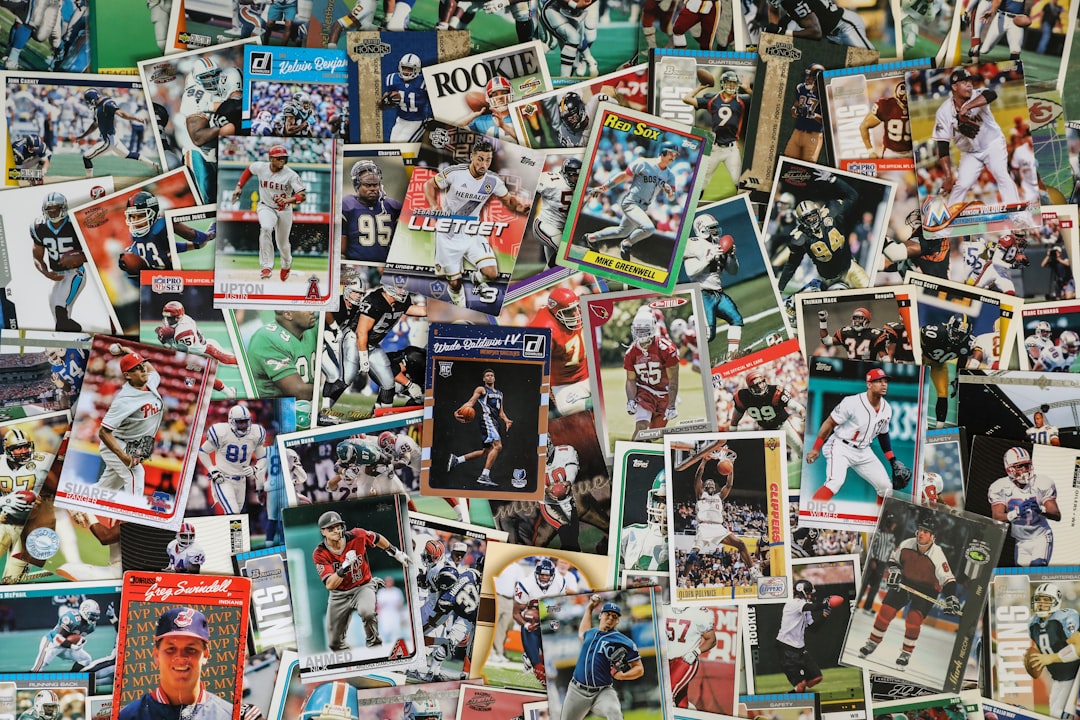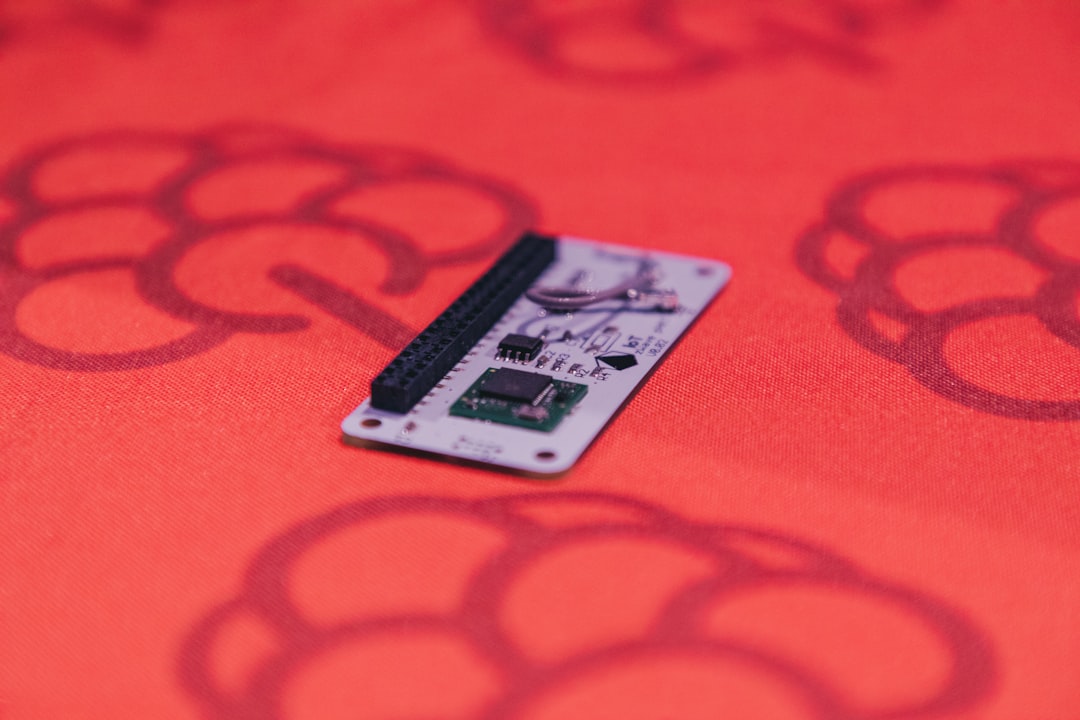

Engage prospects with a scan and streamline customer engagement with FREE QR code marketing tools by Sona – no strings attached!
Create a Free QR CodeFree consultation

No commitment

Engage prospects with a scan and streamline customer engagement with FREE QR code marketing tools by Sona – no strings attached!
Create a Free QR CodeFree consultation

No commitment
Across the sports card retail landscape, the challenge of converting in-store and offline interest into measurable online engagement and revenue is more complex and critical than ever before. With collectors increasingly seeking authentication, product information, and exclusive offers at the point of interaction, traditional analog tools like printed labels, flyers, or manual signup sheets can leave high-value prospects untracked, making genuine growth elusive.
QR codes now stand as a key solution, instantly connecting customers from retail displays, packaging, or event sign-up sheets to landing pages, value assessments, loyalty programs, and authenticated digital experiences. This seamless handoff not only elevates the collector experience but ensures that retailers capture intent data from every touchpoint, closing the gap on lost prospects who might never otherwise appear in marketing systems or CRMs.
This guide explores how smart QR code strategies help sports card retailers transform offline touchpoints into digital action. From practical lead generation to accurate conversion tracking and retargeting opportunities, discover proven workflows and real-world scenarios where every scan can become a measurable growth opportunity. Learn how pain points like anonymous foot traffic, missed follow-ups, and incomplete data can become turning points for retail success.

Sports card retailers frequently encounter the issue of lost opportunities when in-store interest goes unrecorded or high-value collectors leave without engaging digitally. Many customers browse, seek information, or ask about grading without ever filling out a form, making them impossible to capture through legacy methods. Integrating QR codes at key touchpoints modernizes interaction, turning passive interest into trackable engagement.
The most effective programs replace analog processes with QR-first workflows. Printed brochures become dynamic landing pages with real-time inventory; paper raffle slips turn into digital entries with automated follow-up; and manual loyalty enrollments become instant signups with a scan at checkout. These upgrades reduce friction for collectors, shorten the path to conversion, and give retailers the attribution data they need to invest in what works.
Advanced platforms such as Sona QR’s product overview centralize multi-format QR generation, contact enrichment, CRM syncing, and analytics. When scan data flows directly into your systems, missed prospects and anonymous traffic become exceptions, not your status quo.

Physical-to-digital friction frustrates both retailers and collectors in sports card environments, where the stakes are high on authenticity, scarcity, and pricing. Without a clear bridge, even enthusiastic in-person engagement goes untracked, leaving businesses blind to genuine interest and causing missed upsell or follow-up opportunities. QR codes remove this friction in ways that build trust and speed up decisions.
Authentication and provenance are top priorities for serious buyers. A clear call to scan on holders or displays sends shoppers directly to certification pages, population reports, or recent comp data, preventing walkaways and unnecessary debates. At the same time, QR-enrolled loyalty and offers capture intent at the exact moment someone is motivated to act, which is at the counter and during events.
Retailers who operationalize these insights reduce incomplete or outdated lead data and tailor segments to real collector behavior. That results in cleaner nurturing, better ads, and a store experience that feels purpose-built for serious hobbyists.

Retailers must meet multiple collector needs in real time, from verification to valuation to loyalty. The right QR formats turn those needs into simple flows that capture data and move buyers forward.
Dynamic QR codes from Sona QR make these formats easier to manage at scale. You can change destinations without reprinting, create A/B tests, and centralize reporting across every format and placement.

Often, the highest growth potential hides in plain sight where collectors already engage: packaging, displays, events, and windows. Without QR codes, retailers miss the chance to capture intent and measure what is working. With a clear placement plan, every surface can become a conversion opportunity.
In practice, prioritize where the buyer needs confidence, convenience, or a nudge to join your ecosystem. The following placements consistently deliver in sports card environments and can be tracked in Sona QR by campaign, SKU, store, and date.
Retailers struggle to personalize journeys and surface the right upsells when staff are busy or data is thin. QR codes simplify these moments by delivering value on scan and capturing behavioral context for later.
The strongest use cases deliver both utility and a measurable next step. Think verification, enrollment, and event activation that lead to authenticated profiles, consented communications, and conversion signals.
Anonymous in-store traffic is a persistent pain point. You cannot follow up on what you cannot see. QR codes transform those lost moments into dynamic retargeting lists by attaching purpose and context to each scan.
With a multi-code strategy, you capture more than clicks. You capture who scanned, where, when, and why. That intent data fuels relevant email, SMS, and ad campaigns that meet collectors where they are in the journey.
For sports card retailers, helpful distinctions include collectors focused on a specific sport, set chasers vs. flippers, grading-focused buyers vs. raw-card buyers, high-value slab purchasers vs. pack-openers, and local event regulars vs. out-of-town show attendees. These segments make your outreach feel like a concierge service rather than a generic broadcast.
Sports card retailers often spread effort across print, social, events, and email, but the channels remain disconnected without a shared data layer. QR codes unify campaigns, create a single system of action, and make attribution clearer. That turns your marketing mix from parallel tracks into a single, connected journey.
The most effective integrations respect the context of each channel. A direct mailer should offer a quick RSVP for a nearby event; a livestream overlay should promote instant app downloads and wish list alerts; a poster at checkout should simplify loyalty signups. Each scan becomes a trackable step toward conversion.
Centralized platforms such as Sona QR manage codes for every channel, monitor performance in one dashboard, and sync data to your CRM and ad tools. That integration lets you build a connected funnel from first scan to final sale.
Retailers risk losing high-intent prospects or misattributing sales without a structured approach. A clear execution plan keeps your team aligned, ensures consistency across assets, and accelerates optimization as data comes in. The following steps translate strategy into action you can repeat and scale across stores, events, and campaigns.
Before launching, set a specific goal such as increasing loyalty signups at checkout, capturing RSVPs for trade night, or driving authentication scans for high-value slabs. Tie every decision to that goal so creative, placement, and measurement align.
Define the outcome you want: app downloads, VIP enrollments, authentication checks, trade-night RSVPs, or consignment intake. A sharp use case clarifies the right QR format, landing page, and follow-up workflow.
Choose between static and dynamic codes based on the need for tracking and flexibility. Static works for evergreen destinations like a general contact page; dynamic is the right choice for campaigns, segmented attribution, and edits after printing.
Design for scanning speed and clarity. Add a branded frame, a concise value-driven CTA, and sufficient white space. Test across devices, distances, and lighting conditions before you print.
Roll out where collectors already engage: checkout counters, display cases, event tables, livestream overlays, and direct mail. Align placements to journey stage and expected behavior so the scan feels like the natural next step.
Use analytics to see which placements and messages work best. Set benchmarks for scan volume, conversion rate, and time-to-action. Iterate creative and positioning based on evidence, not assumptions.
A short internal retrospective after each campaign cements learning. Document placement winners, message insights, and audience behavior. Apply those patterns to your next release or event to compound results.
One of the biggest blind spots in sports card retail is linking offline action to digital outcomes. Without this link, it is hard to know which display drove a sale or which event created a valuable lead. QR scan tracking removes that fog by tying context to each engagement and surfacing how those interactions influence revenue.
With robust instrumentation, a scan becomes the first node in a buyer journey you can actually see. You can follow the path from display case to authentication page, to loyalty signup, to pre-order, and finally to repeat purchase. That clarity changes how you allocate budget and staff attention.
The result is a marketing engine that learns from every interaction. Scans tell you what your audience values; attribution shows which actions pay off. Together, they inform better creative, smarter placements, and a more profitable retail operation.
Common pitfalls like low scan rates, undifferentiated offers, or staff uncertainty can stall QR program impact. A few best practices help you scale what works and avoid costly dead ends.
Start by aligning every code with a specific value proposition. If the benefit is vague, scanning feels like work. When the value is concrete, such as Get comps now, Join VIP in 10 seconds, or Claim trade-night entry, you lower friction and increase action.
Creative deployments amplify results. For example, print QR codes on rare-card sleeves that link to provenance and insurance tips, then invite buyers to a VIP group. Or include a QR on event mailers that grants early-bird access to a graded-card showcase. These touches not only drive engagement but also surface strong buying signals your team can act on.

Missed segmentation or untracked interest can stall growth in a market driven by trust and momentum. Forward-thinking retailers are using QR codes to create clarity, capture demand, and accelerate decision-making.
One store integrated authentication QR codes into graded card encapsulation displays. Scans pulled up grading records and recent comps, building buyer confidence at the case. Conversion on featured slabs increased, and scan data revealed which players and sets drove the most foot traffic and follow-up.
Another retailer used QR-driven signups at a regional trade show. Each code tagged visitors by table and topic. Post-show, segmented offers for grading discounts and set pre-orders outperformed past generic blasts. Lead quality improved and the list grew with qualified collectors instead of casual passersby.
These examples show how making every scan count can transform missed chances into ongoing revenue. They also illustrate a repeatable pattern: deliver value on scan, capture context, and follow up with tailored offers that reflect what the collector just signaled.
To truly close gaps in collector journeys, QR codes must be accessible, trackable, and immediately valuable. Placement, messaging, and readiness all matter. When executed well, scans feel like a service, not a hurdle.
Consider infrastructure as part of the experience. Stable in-store Wi-Fi, glare-free lighting on displays, and readable code sizes improve scannability. Pair those physical factors with strong incentives and timely follow-up to maximize impact.
QR codes are more than a convenience; they are a foundation for sports card retailers who need to turn invisible foot traffic into measurable demand. Every scan can bridge a moment of interest to a digital action like authentication, loyalty activation, or RSVP, converting what would otherwise be anonymous visits into growth that you can track to revenue.
From real-time segmentation and precise attribution to surfacing valuable upsell or cross-sell signals, modern QR strategies enable retailers to act on hard-to-access data, improve campaign agility, and serve collectors better. With each personalized follow-up and measured engagement, you build a resilient, growth-ready operation for today’s digitally savvy, detail-oriented collector base.
Start creating QR codes for free.
QR codes have transformed sports card retailers from traditional brick-and-mortar shops into dynamic, data-driven hubs for customer engagement and sales growth. Whether it’s attracting new collectors, enhancing in-store and online experiences, or tracking which promotions truly resonate, QR codes replace guesswork with instant, actionable insights that turn every card display and marketing material into a powerful conversion tool. Imagine knowing exactly which cards or promotions drive buyers to act—and being able to optimize your campaigns on the fly.
With Sona QR, sports card retailers can create dynamic, trackable QR codes in seconds, update campaigns without costly reprints, and link every scan directly to sales performance. No more missed opportunities—just smarter, more profitable marketing that connects passionate collectors with the cards they love. Start for free with Sona QR today and turn every scan into a loyal customer and every display into a winning strategy.
Sports card retailers can be found both in physical stores at events, trade shows, and local shops, as well as online through retailer websites, social media, and platforms that integrate QR codes to connect offline displays to digital experiences.
You can determine your sports cards' value by scanning QR codes on card holders or packaging that link to grading reports, population reports, provenance pages, and recent comparable sales data.
The most valuable sports cards are often premium graded slabs with verified authenticity, provenance, and limited editions, which can be identified through QR code scans that provide certification and population details.
QR codes on sports cards, packaging, or displays connect collectors instantly to authentication information, product details, loyalty programs, event sign-ups, and digital offers, turning offline interest into trackable online engagement.
QR codes reduce friction by providing instant authentication, enabling digital loyalty enrollment, facilitating event registrations, delivering dynamic content updates, and capturing valuable collector intent data for retailers.
Rare or limited edition sports cards can be located at specialty retailers, events, and shows where QR codes on packaging and displays provide provenance, grading information, and exclusive offer details.
Authenticity can be verified by scanning QR codes on card holders or packaging that link directly to certification pages, grading reports, and provenance timelines maintained by grading partners.
Current trends include the integration of QR codes for instant authentication and loyalty programs, dynamic content linked to cards and events, digital engagement at trade shows, and data-driven marketing strategies for collector segmentation.
Using QR codes, you can access real-time authentication data, enroll in loyalty programs, receive exclusive offers, track inventory, participate in events digitally, and connect with a community through apps and online platforms.
Sports cards come in various types including raw cards, graded slabs with authentication, limited editions, rare inserts, and digital-linked cards that may include QR codes for provenance and collector engagement.
Use Sona QR's trackable codes to improve customer acquisition and engagement today.
Create Your FREE Trackable QR Code in SecondsJoin results-focused teams combining Sona Platform automation with advanced Google Ads strategies to scale lead generation

Connect your existing CRM

Free Account Enrichment

No setup fees
No commitment required

Free consultation

Get a custom Google Ads roadmap for your business






Launch campaigns that generate qualified leads in 30 days or less.
